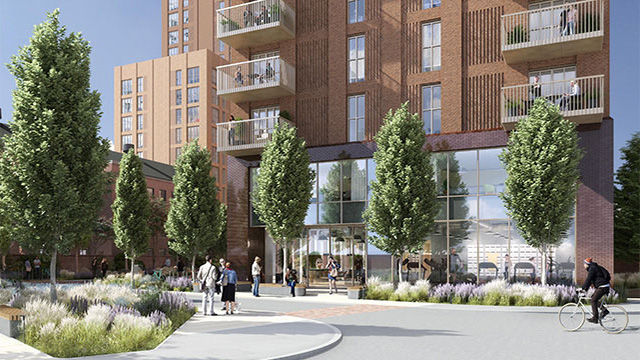· An easement granted for the benefit
of one piece of land cannot be used for the distinct benefit of additional land
· Only if the use of the additional
land facilitated by the easement is truly ancillary to the use of the dominant
land will it be covered by the grant
The benefit of
easements, particularly rights of access, can add significantly to the utility
and value of land. One way in which these advantages could be spread more
widely would be if the owner of land benefited by such an easement were able to
extend its use to additional land. However, a key feature of any easement is
that it constitutes a right that is attached to a particular piece of land.
The issue that
therefore arises from time to time concerns the circumstances in which a
landowner who has the benefit of an easement in respect of one piece of land
can then use that right in relation to adjoining land that he also owns.
This question has
recently been addressed by the Court of Appeal, which, although it has again
emphasised the basic principle that this cannot be done, has acknowledged that
deciding whether a right is actually being used for the distinct benefit of the
additional land is not always easy.
The facts in Peacock
v Custins [2001] 13 EG 152 are typical of this type of problem. The
claimants owned about 15 acres of farmland (the red land) that had the benefit
of an express right of access from the highway ‘at all times and for all
purposes’ across a strip of land owned by the defendants. Another area of land,
the blue land, which was adjacent to the red land, was also owned by the
claimants.
In 1977 the
claimants sold that part of the blue land adjoining the highway without
reserving any rights of access across the part sold, thus leaving the remainder
landlocked. Thereafter, the remaining part of the blue land (amounting to some
10 acres) and the red land was let to a tenant, who farmed both pieces
together, using the right of way across the defendants’ property as access. The
defendants challenged the claimants’ right to use the right of way for the
benefit of the blue land.
When the case was
being heard in the county court, the evidence showed that the right of way was
used around six times a year, and that approximately two of these visits could
be attributed to the fact that the blue land was being farmed alongside the red
land. The trial judge took the view that the access was being used for the
purpose of farming the red land, but that the opportunity was being taken to
enter the blue land from the red land as part of that farming activity, with no
significant additional use of the right of way. He therefore concluded that the
claimants had not exceeded the terms of their easement.
The Court of Appeal
did not agree with this approach. The basic legal principle is clear. In order
to exist in the first place, an easement must be granted for the benefit of an
identified piece of land. To use the right for the benefit of other land will
exceed the terms upon which it was granted and will amount to a trespass, which
can be remedied either by the grant of an injunction or by an award of damages.
However, as
Schiemann LJ acknowledged, ‘the law is clear at the extremes’. Hence, if the
claimants had used the right of way solely for the purpose of gaining access to
the blue land, they would have exceeded the terms of the easement. Equally, if
they had used the track to access the red land, but had then gone onto the blue
land from the red land to engage in some activity genuinely related to the
honest use of the red land, such as to stroll upon it or to have a picnic, they
would not have infringed the limits of their rights. However, the present case
lay somewhere in the middle: one of the purposes of the claimants’ use of the
right of way was to cultivate land other than that for which the right was
granted.
The claimants
argued that the terms of the right of way were not exceeded. They maintained
that it was not being used primarily to access the blue land, nor did the
actual use impose a significantly heavier practical burden upon the owner of
the servient land. However, as the Court of Appeal pointed out, this is not the
issue: ‘the right is not to use the way for the purposes of benefiting any
property, provided that the total user does not exceed some notional maximum
user which the beneficiary might have been entitled to make for the purposes of
the dominant tenement… the right is to use the way for the purposes of the
dominant tenement only’. Put starkly, the claimants were claiming to be able to
use a right of way that was granted for the benefit of 15 acres of red land for
the extended purpose of accessing and cultivating a further 10 acres of blue
land.
The court was
unanimous in concluding that the defendants were entitled to a declaration that
the claimants were not entitled to use the right of way for the purpose of
obtaining access to the blue land in order to cultivate it. The right of way
was being used for the purpose of cultivating the blue land. Such use could not
sensibly be described as ancillary to the cultivation of the red land. This
necessarily increased the burden upon the owner of the servient land. ‘Burden’,
in this context, is not measured by the number of journeys made, or the weight
of vehicles, but by whether the use is for the purpose of land other than that
for which the right of way was granted.






